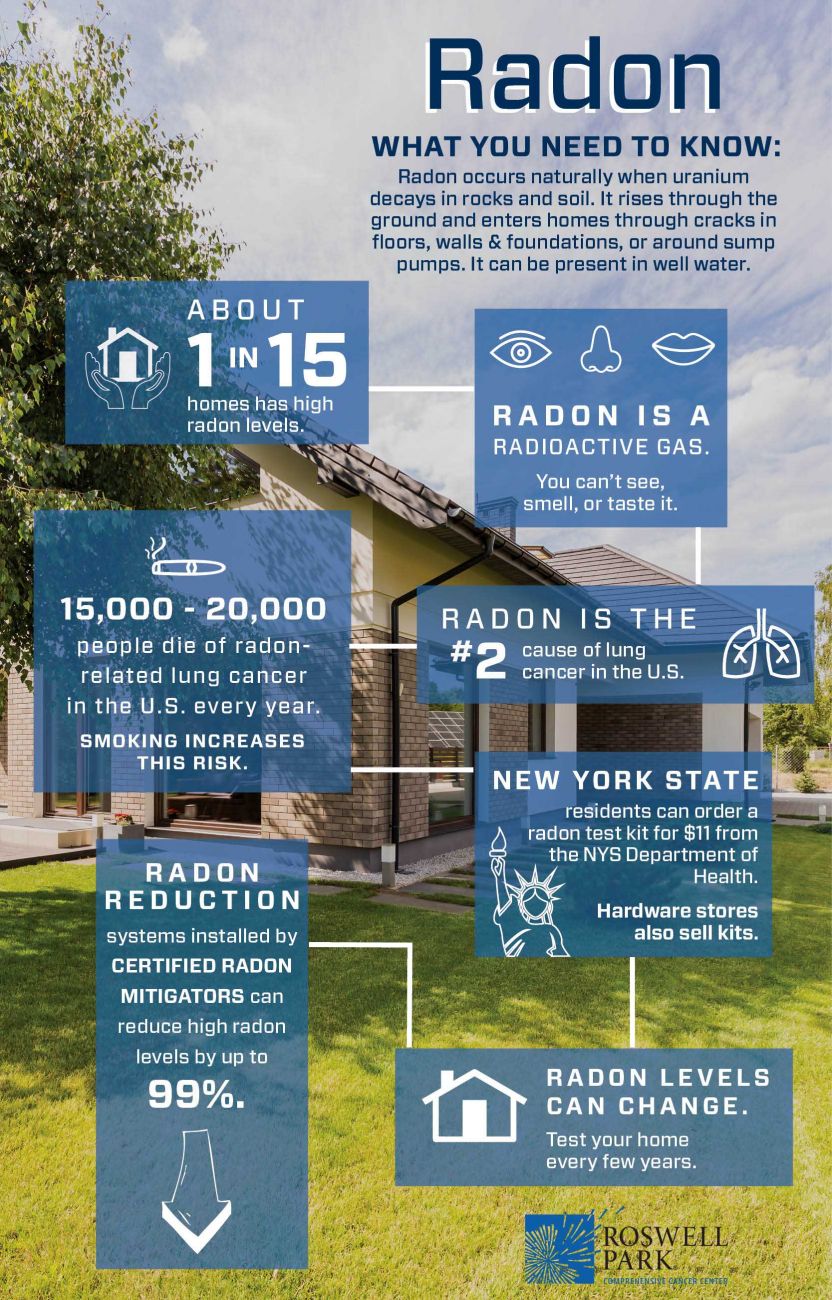Asbestos, mold and radon: three hazardous substances you never want to find in your home. While all three can be removed and remediated by trained professionals, radon is different, because you can’t see, smell or taste it. That doesn't mean radon is harmless. If left untreated, it can be hazardous to your family’s health. In fact, it’s the second leading cause of lung cancer in the United States.
Where does radon come from? It occurs naturally when uranium decays in rocks and soil. The gas rises through the ground and enters homes through cracks in floors, walls and foundations, or around sump pumps. Some areas of Western New York have exceptionally high levels of radon.
How can you find out if there are high levels of radon on your home? Test kits are available for $10 to $30 from various retailers (learn more about where to buy test kits from the New York State Department of Health). If testing shows dangerous levels of radon in your home, there are various ways to fix the situation, such as sealing your basement floor and walls or through active soil depressurization, which involves installing a pipe to carry any radon gas from the basement to the outside of the house.
Remember, radon levels can change over time, so even if your home was clear when you bought it, you should retest every few years.
Learn more and find out how to keep your home radon-free by checking out our radon fact sheet:
Never miss another Cancer Talk blog!
Sign up to receive our monthly Cancer Talk e-newsletter.
Sign up!

